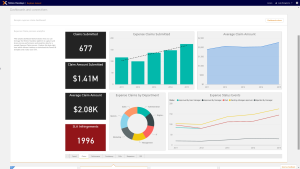New research report, Nintex: Creating Workflows that Enable Digital Transformation, provides a vendor profile and buyer's guide of Nintex
As companies take on digital transformation, they need to consider the people (their skills and backgrounds), the processes (have they made them digital or they still doing things on spreadsheets?) and the technology (to enable the company to be more digitally oriented.)
A digital workflow and content automation platform that improves the way people work can help make this transition easy. This type of software needs to enable point and click workflow automation to handle everything from basic business functions to company-wide processes with a few clicks.
In addition to WCA, the digital business platform also needs to have analytics. Why? Because the business will want to monitor the workflows and determine which ones are working well and which processes still need improving. (Most of the time companies don’t look to see if a process they have implemented is effective or efficient). In a new research report, I delve into the capabilities and examine the impact of a digital workflow/content automation platform, Nintex.
Let’s say you wanted to see how well your expense claims process was working. In the figure below, Nintex Hawkeye is used for expense claim processing; to look at claims submitted and service level agreement infringements data to sharing among the management to increase the effectiveness and efficiency of the expense claim process.
Not only can a company automate a workflow digitally, but they can also monitor, capture and share the process performance for expense claims. The company can see number of claims submitted (677), the amount of expense claims submitted ($1.41M), the average expense claim amount submitted ($2.08K) and what the SLAs infringements were (1996). They can also see how the average expense claim is rising in cost each year (bar chart) and the departments who are submitting the expense reports (the circle graphic.) In this one simple example, a company can take what used to be a manual or somewhat manual process, make it completely digital as well as provide analytics around how well the process is working.
Nintex’s user interface eliminates the need for complicated coding and training for lines of business, system integrators, and IT departments as they pursue digital transformation. In addition, the workflow analytics allow companies to more effectively optimize workflows across organizations, be more productive and intelligent, correct ineffective or inefficient workflows, and thus increase revenue as well as decrease costs.
In evaluating the value of digital transformation software, it is important to look at departments that drive revenue and affect customers. High return on investment (ROI) use cases are processes that involve content (documents, forms, records, etc.) for which requests for further automation and process improvement may take a long time for IT to accommodate.
To successfully compete in this increasingly digital world, enterprises need to transform their slow, error-prone operations from manual, analog processes to automated digital workflows and document generation. As companies consider their journey to a digital workplace, they will need to consider how they are going to transform all their processes that were once done on paper or in spreadsheets, to a fully digital process. A digital business platform is a great place to start. For more on this report, please click here.



